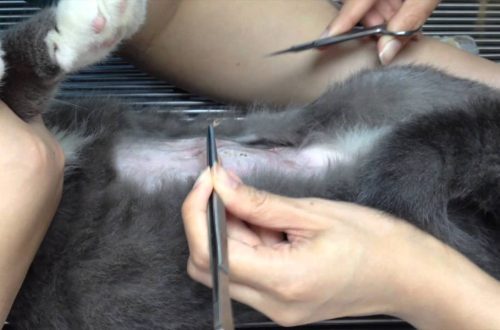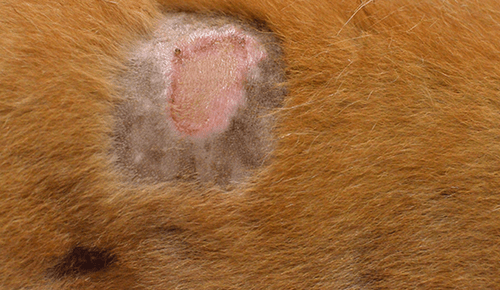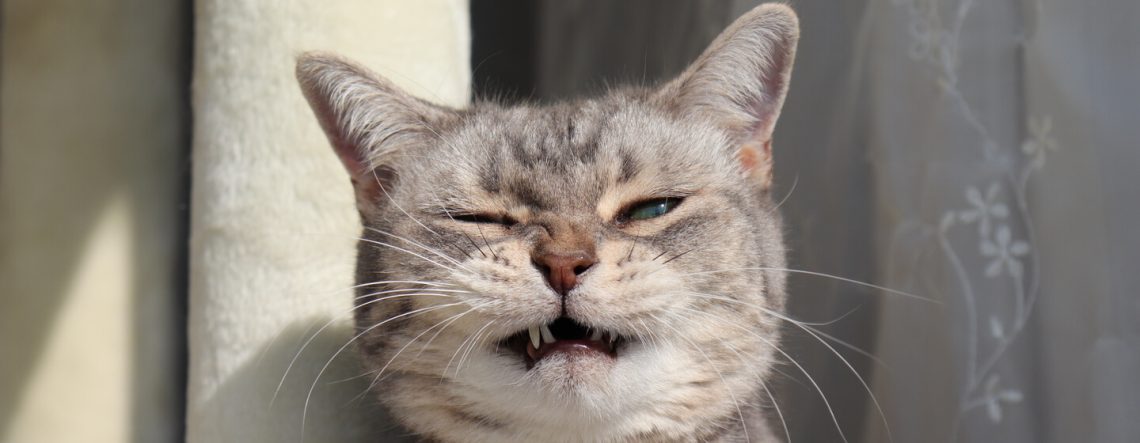
Why is the cat sneezing and what to do?
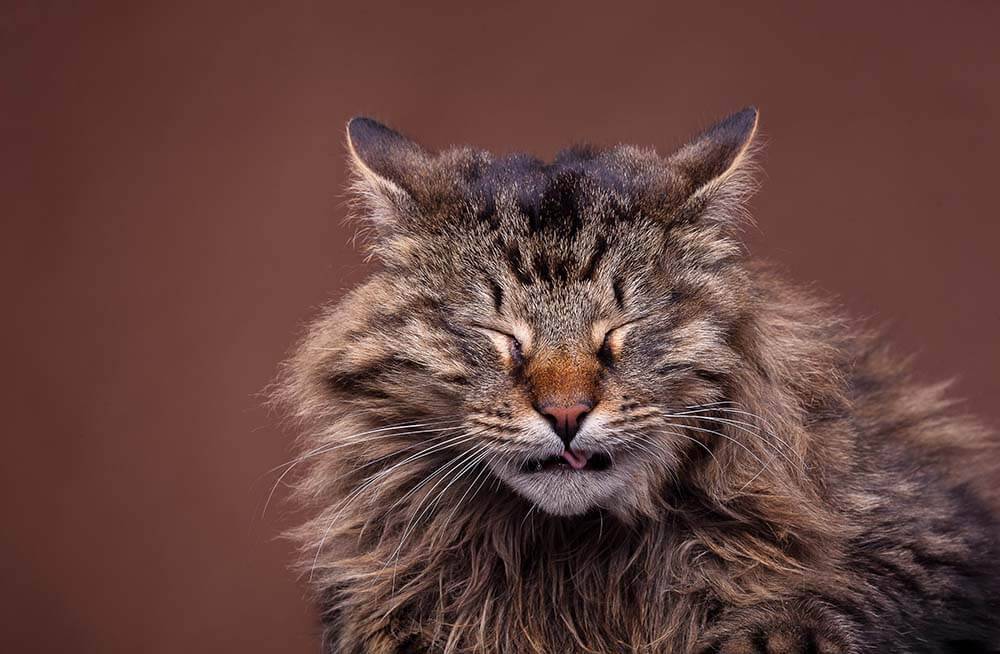
Contents
Why do cats sneeze – common causes
There are a number of reasons why a cat sneezes. Some of them are minor and do not require treatment, others are serious and require mandatory veterinary care. If your cat only sneezes occasionally and is otherwise healthy and active, there is probably nothing to worry about. Occasional sneezing in a pet is often the body’s response to irritants in the air.
However, if the sneezing is prolonged and/or accompanied by additional symptoms, this is no longer considered normal.
Viral infections
They are the main reason why a cat starts sneezing. The most common diseases include herpesvirus infection (rhinotracheitis), calcivirosis.
Herpes virus infection
It is characterized by acute or chronic course. The virus damages the mucous membrane of the nasal cavity, causing inflammation (rhinitis) in it, which is often accompanied by conjunctivitis (inflammation of the mucous membrane of the eye). Kittens and unvaccinated animals are more prone to this disease.
Calcivirus
It most often damages the upper respiratory tract, although sometimes there is an acute form of the disease, which leads to multiple organ failure (related to several systems) (hepatitis, pancreatitis, vasculitis, pneumonia, etc.). Mortality in this form is very high, although its occurrence in the population is markedly lower than the respiratory (relating to the respiratory tract) form. Young and unvaccinated animals are most susceptible to the disease. Characteristic clinical symptoms are ulcers in the oral cavity, salivation, lethargy, refusal to eat.
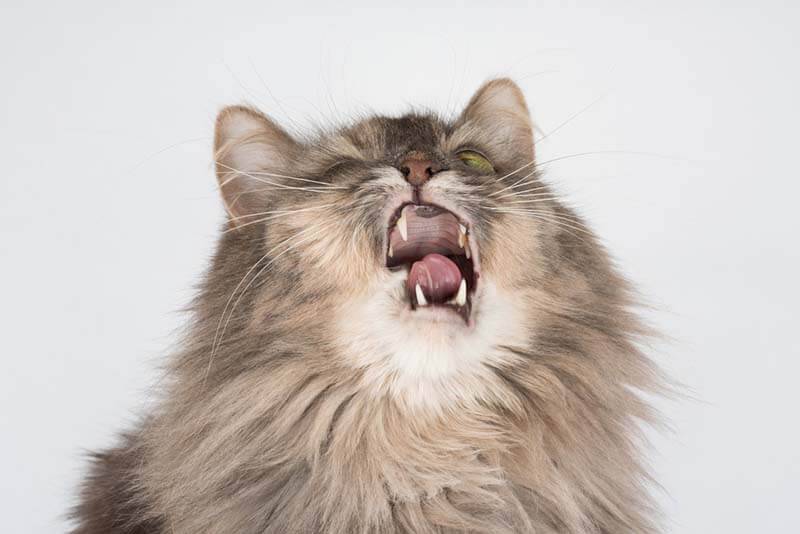
Bacterial and fungal infections
These include bordetellosis, chlamydia, mycoplasmosis, cryptococcosis, aspergillosis. All these diseases are accompanied by rhinitis, during which the cat sneezes, he has a runny nose and nasal discharge.
These pathogens (pathogens) can either independently cause damage to the upper respiratory tract, or join again against the background of already occurring viral infections.
bordetellosis
One of the most common bacterial diseases. The main complication of this infection is pneumonia. In this case, the inflammation “descends” lower – to the lungs.
chlamydia
This is a bacterial infection that affects the mucous membranes of the nasal cavity, eyes, and in some cases the reproductive system. The disease is mainly observed in young animals.
Mycoplasmosis
This bacterial infection is usually asymptomatic. Under certain circumstances, the pathogen can affect the respiratory, urinary and reproductive systems, as well as the eyes of the animal.
Cryptococcosis
Systemic disease caused by yeast-like fungi. The pathogen can damage the upper respiratory tract, skin, and nervous system.
Aspergillosis
The causative agent of the disease are various types of mold fungi. They affect the mucous membrane of the nasal cavity and frontal sinuses.
Foreign objects in the upper respiratory tract
One of the fairly common reasons that a cat sneezes is the ingress of small particles of food, blades of grass and other foreign objects into the nasal cavity or nasopharynx.
Neoplasms
Tumors in the nasal cavity are mainly found among older cats, although there are exceptions. Neoplasms are benign and malignant in nature and can partially or completely block the nasal passages.
Polyps
These are benign formations on the nasal mucosa. They are more common in young cats and can obstruct the passage of air through the respiratory tract.
Inhalation of irritants
Another reason why a cat often sneezes may be the inhalation of sharp, strong odors (cigarette smoke, cleaning products, various sprays, perfumes, scented cat litter) and fine substances (pollen, dust). As a result, inflammation and swelling of the tissues in the airways sometimes develop. In some situations, a secondary infection of a viral and / or bacterial nature joins.

Dental diseases
Inflammation of the organs of the oral cavity, which occurs for various reasons (infections, tartar, etc.), can spread to nearby tissues and organs, in particular, to the nasal cavity. This leads to rhinitis. In advanced cases, the formation of so-called oronasal fistulas (holes) between the oral and nasal cavities is noted.
Head injury
The cause of sneezing can also be various mechanical damage to the head and respiratory organs, which are the result, for example, of a car injury or a fall from a height.
Belonging to brachycephalic breeds
These breeds are distinguished by shortened facial bones of the skull and nose, reduced nostrils, narrowed nasal passages, and an elongated soft palate. These include Persian, exotic, British and some other breeds of cats. Due to anatomical features, they tend to snore, sniff, or sneeze more. However, in this case, it is rather regarded as a variant of the norm.
Reverse sneeze
This is a fairly common phenomenon, including in cats, characterized by a grunting or snoring sound, sometimes sneezing. If this phenomenon occurs episodically and the animal does not bother, then no treatment is required. If the cat sneezes constantly, then you should pay attention to this.
birth defects
These include anomalies of the upper jaw and nasal bones. For example, splitting of the hard palate (the so-called “cleft palate”), curvature of the nasal septum.
Concomitant symptoms
In infectious diseases, there will almost certainly be discharge from the nasal cavity and eyes, which can be transparent, yellow, green in color. The cat becomes lethargic, sneezes and coughs, refuses to eat, his body temperature may rise.
When foreign objects get into the nasal cavity, neoplasms, polyps, in addition to active sneezing, you can notice a loud sound during breathing, reminiscent of snoring. Also, pets have anxiety and attempts to get a foreign object out of their mouths with their paws.
If neoplasms, polyps, or a mechanical injury to the head and nose occur in the nasal cavity, the cat may sneeze with blood.
In dental diseases, in addition to various discharges from the nose (mucous, purulent, bloody), inflammation of the gums (gingivitis), plaque, and salivation are noted in the oral cavity.
With a long course of the disease caused by any of the causes, the condition may worsen, and there will be difficulty breathing through the nose or with an open mouth, shortness of breath.
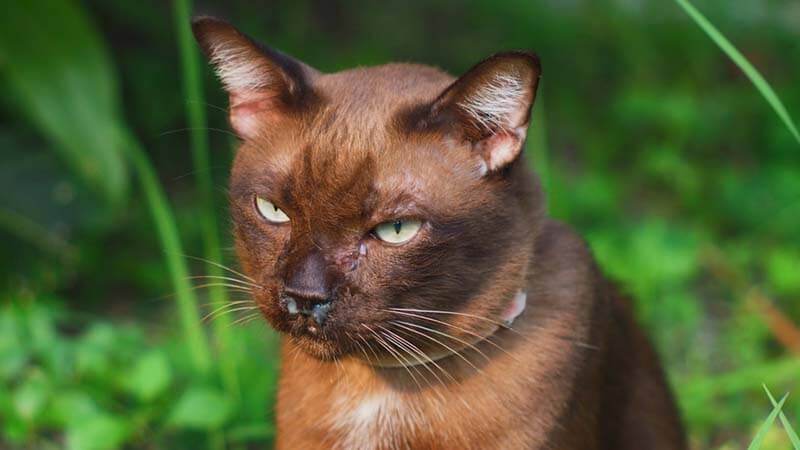
Diagnostics
Sneezing is a non-specific symptom that accompanies many diseases, so it is impossible to make an accurate diagnosis only on it.
Always finding out the cause of any disease begins with an anamnesis (history of life and illness) and examination of the animal. This is an important part of the diagnosis procedure. The veterinarian must have a clear picture of what is happening. He needs the following information: whether the pet was vaccinated or not, whether it was treated against parasites, when the symptoms began, etc.
Next, standard laboratory and instrumental studies are carried out: a clinical blood test and a biochemical study of blood serum (if necessary), an x-ray of the chest and head.
If, as a result of the manipulations described above, it was not possible to identify the cause of the symptoms, additional diagnostics are resorted to:
specific tests for the detection of bacteria, viruses, fungal pathogens (for example, the polymerase chain reaction (PCR) method for detecting herpes infection, calcivirosis, mycoplasmosis, bordetellosis, etc.);
to exclude foreign objects, tumors, polyps, computed (CT) and magnetic resonance imaging (MRI), rhinoscopy are used.
when various neoplasms are detected, material is taken for cytological and bacteriological examination.
All procedures that require immobilization of the pet are performed under sedation (artificial coma) or anesthesia (anesthesia), and the cat usually stays for several hours at the veterinary clinic.
When should you contact your veterinarian immediately?
A veterinary consultation is required in all cases where the cat sneezes frequently and/or additional symptoms are noted (lethargy, refusal to eat, cough, nasal discharge, shortness of breath).
Treatment
The treatment plan is drawn up based on the information obtained during the examination of the pet. If a foreign object is stuck in the cat’s nasal cavity or it has neoplasms, polyps, surgery will be required to safely remove them.
Treatment of viral, bacterial, fungal infections of the upper respiratory tract depends on the severity of the symptoms of the disease. Antiviral and antibacterial drugs, eye drops are mainly used. In severe cases, hospitalization may be required for more intensive treatment, during which intravenous infusions (droppers) and force-feeding will be used.
If the cat not only sneezes, but also has abundant discharge from the eyes and snot, then they must be carefully removed. If nasal congestion is severe and breathing is difficult, inhalation of saline solution using a nebulizer (inhaler) may be necessary to facilitate the release of mucous discharge.
In dental diseases, both medication (antibiotics) and surgical treatment (removal of tartar, diseased teeth, etc.) are used.
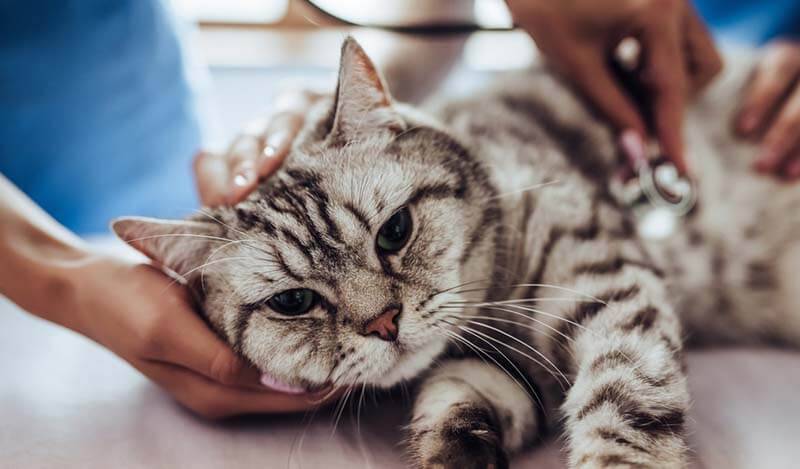
What can you do at home?
If you notice that your cat is sneezing, then at home it is recommended to do the following: do not worry the pet, especially if he has difficulty breathing, because excessive excitement and anxiety can aggravate the condition. It is also important to keep the owner calm and contact the veterinary clinic as soon as possible to find out the reasons.
Do not give your cat any medication without first consulting your veterinarian. This is especially true for human drugs, as some of them are toxic to animals.
What to do when a kitten sneezes?
If the kitten only sneezes occasionally, without any other symptoms, then there is probably nothing to worry about and you can just watch him for any changes.
If sneezing is frequent and/or accompanied by other symptoms (refusal to eat, nasal discharge, lethargy, etc.), a visit to the veterinarian will be required for a correct diagnosis and treatment. Young animals are most prone to various infectious diseases due to their still fragile immunity. In addition, it is worth remembering that a sick kitten is infectious for other animals in the house / apartment.
Prevention
Many infectious diseases can be prevented in advance by vaccination, which usually begins at two months of age. In the future, the animal is revaccinated annually. To date, several combination vaccines are available that protect against calcivirosis, herpes virus, chlamydia.
It is also necessary to carry out regular health checks (medical examination) in a veterinary clinic. They can be combined with annual vaccinations. Such activities help to identify key issues that would otherwise go unnoticed.
Taking care of the microclimate and cleanliness in the apartment is an important measure to prevent sneezing. It is required to carry out wet cleaning in a timely manner, especially in places where a lot of dust accumulates. The apartment must be well ventilated and at the same time protect the pet from drafts. It is worth considering buying a humidifier to create optimal climate conditions in the house.
Any dangerous, small objects that cats can inhale should be kept out of reach. It is also advisable to minimize the use of air fresheners, perfumes and other potential irritants in the environment where the pet lives.
When a new cat enters the house, it is extremely important to isolate it from other animals for three to four weeks. During quarantine, possible infections that have not yet manifested themselves may make themselves felt.
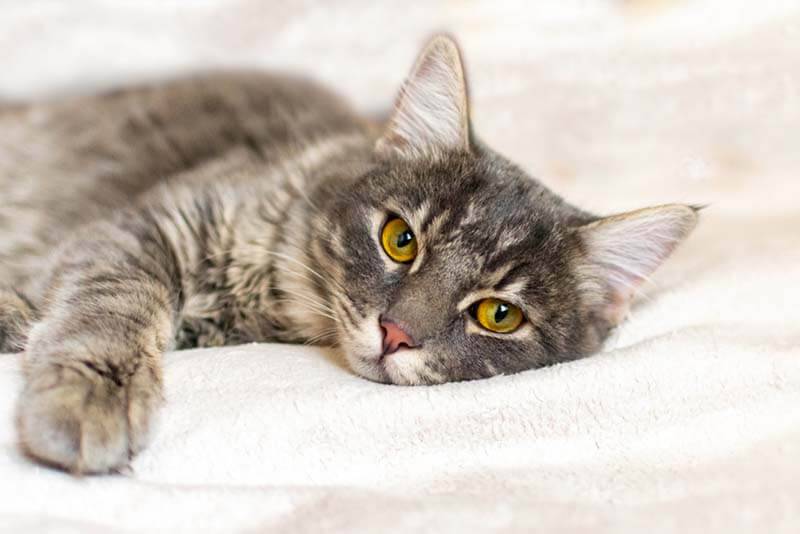
If the cat sneezes: summary
Sneezing is a protective reflex that ensures the removal of various foreign objects from the nasal cavity.
The main causes of sneezing are: infections of a viral, bacterial and / or fungal nature, foreign objects entering the nasal cavity, neoplasms, nasal polyps, injuries.
If the sneezing is infrequent and the pet feels otherwise well (active, appetite is normal, etc.), this is most likely not due to any serious illness.
Concomitant symptoms include nasal discharge (mucous, purulent, bloody), conjunctivitis, shortness of breath, lethargy.
The diagnosis is made in a complex way: an anamnesis is taken, an animal is examined, laboratory and instrumental diagnostics are performed (clinical and biochemical blood tests, PCR testing for infections, X-ray, rhinoscopy, etc.).
Treatment will depend on the cause of the runny nose and should only be prescribed by a veterinarian. At home, you should not self-medicate.
In kittens, infectious diseases are the most common cause of sneezing.
Prevention of various causes of sneezing includes vaccination, timely wet cleaning of premises, minimization of the use of various irritating substances.
Answers to frequently asked questions
January 24 2022
Updated: February 25, 2022



